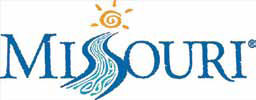From the Roundtable: Community suggestions could help promote local tourism
by Al Germond
October 1, 2010

Revenue from the tax on room rentals increased 18.5 percent in August compared with the same month in 2009. The tax revenue, which is reinvested in various ways for visitor activities, dropped more than 8 percent to $1.6 million last year.
Here’s a well-earned fillip for retiring Columbia Convention and Visitors Bureau Director Lorah Steiner. Despite the recession-linked revenue dip last year, her department’s activities have done much to enlarge Columbia’s dot on the map as an overnight stopover because there have been a growing number of reasons to spend time here.

Collegetown, USA, used to be little more than another dot on a major transcontinental highway. Some travelers still remember Columbia only because they stopped to bunk down for the night at a motel at the city’s northern edge. Others penetrated into the community farther to cheer for the Tigers or tend to a child attending MU or another local college. But time spent here was rather limited.
When Business Loop 70 was called Highway 40, this was a town of modest motels, tourist cabins and several downtown hotels. Old postcards and auto club guides remind us of the roster of the past. Motels included Stephens and Stephens Holiday, Massey’s Arrow-head, Mizzou, Travelier, Show Me, All States, Air City, Hilltop, Eastwood and the Corral.
Since Interstate 70’s construction, most of the old standbys have disappeared, deteriorated or been heavily made over. The chains arrived, beginning with Holiday Inn and Howard Johnson’s, and provided a little more polish and luxury. With their instant access via nationwide reservation networks, Columbia’s dot on the tourism map all of a sudden got a little bit bigger.
But guidebooks during the years have been pressed to come up with things to do in Columbia. They were rather sparse when it came to drumming up reasons to linger awhile. Aside from an obligatory stop to gaze at the famous Columns as if it were Columbia’s answer to the Taj Mahal or a swing through the Museum of Art and Archeology in Swallow Hall, there really wasn’t much to explore here beyond the strip of motels flanking Highway 40.
Bereft of permanent attractions, Columbia tourism has been augmented by the creation of seasonal events including the True/False Film Festival and the Roots N Blues N BBQ Festival. The next project is a train with dining facilities going to and from Centralia on Columbia’s 21-mile branch line railroad. The dinner train is expected to join the growing list of area attractions future guidebook publishers would be remiss in omitting.
Of course, we can always do better. A start might be to ask impartial observers, first-time visitors, how we stack up when compared with other communities. Let’s organize a collaborative effort to tap all the fertile minds across the community with their ideas and suggestions. I bet they can come up with a pot-load of ways to promote Columbia and the region that surrounds it.
Suggestions would include improved signage and advertising both along area highways and at the portals of the city. A beginning would be to fix up the signs on roads and highways along the city limits. Right now, the state wins the competition. Although it took several tries, someone in the state capital came up with the slickest, most attractive welcoming sign posted at the state’s borders that I’ve ever seen. The blue strip of water between the two “s” letters in the name of our state that leads toward a sun symbol is pure genius!


